Introduction: Nepal Holidays
Nepal, often referred to as the “Land of the Himalayas,” is a treasure trove for both adventurers and cultural explorers. Its unparalleled combination of towering peaks, ancient temples, diverse wildlife, and rich heritage makes it one of the most sought-after travel destinations in the world. Whether you’re seeking the thrill of trekking to Everest Base Camp or spend your Nepal Holidays in the serenity of Lumbini, the birthplace of Buddha, Nepal offers experiences that remain etched in memory.
In recent years, Nepal has seen a substantial recovery in tourism, welcoming over 1,014,882 visitors in 2023—a 65.05% increase from 2022. This surge highlights Nepal’s attractiveness not only for its mountains but also for its cultural, religious, and ecological diversity. In this comprehensive guide, we explore the trekking packages, holiday options, and what makes Nepal a must-visit for travelers worldwide.
Why Choose Nepal for Your Holidays?
1. A Unique Blend of Adventure and Culture
Nepal’s geographical diversity, from the lowland plains to the highest mountains on Earth, offers a unique blend of adventure and tranquility. The country boasts 8 of the world’s 10 highest peaks, including Mount Everest. This diverse landscape is home to some of the best trekking routes in the world, from the strenuous Everest Base Camp Trek to the more leisurely Annapurna Circuit.
But Nepal is not just for trekkers. The country offers profound cultural experiences in cities like Kathmandu, Bhaktapur, and Patan, where UNESCO World Heritage sites such as Pashupatinath, Swayambhunath, and Durbar Squares reveal Nepal’s ancient history and religious significance. Travelers can explore centuries-old temples, vibrant local markets, and rich traditions that showcase the cultural vibrancy of Nepal.
2. Growing Tourism and Economic Impact
Tourism plays a significant role in Nepal’s economy, contributing over US$ 548 million in foreign exchange earnings in 2023. The government has placed increasing emphasis on promoting sustainable tourism practices, making Nepal an eco-friendly destination for global travelers. The average length of stay for tourists in Nepal in 2023 was 13.2 days, allowing ample time for exploring trekking routes and cultural landmarks.
Tourism-related enterprises have also grown. Nepal now boasts over 182 star hotels, 1,416 non-star hotels, and a network of over 5,000 travel and trekking agencies. This infrastructure supports tourists looking for luxury, budget accommodations, and personalized trekking experiences.
3. Diversity of Experiences: From Adventure to Relaxation
Nepal offers a wide range of experiences to cater to all types of travelers. For adrenaline junkies, the country offers adventure sports like paragliding in Pokhara, white-water rafting on the Trishuli River, and bungee jumping in Bhote Koshi. For those seeking relaxation, spiritual journeys to the monasteries of Lumbini or the scenic vistas of Nagarkot offer a peaceful retreat.
Wildlife enthusiasts can enjoy safaris in Chitwan National Park, home to endangered species like the one-horned rhinoceros and Bengal tigers. For families, luxury lodges and easy treks make Nepal a suitable destination for all ages.
Popular Trekking Routes in Nepal
Nepal is renowned for its trekking trails, which attract adventurers from across the globe. Here are three of the most iconic trekking routes, each offering a distinct experience.
1. Everest Base Camp Trek
The Everest Base Camp (EBC) trek is perhaps the most famous trekking route in the world. It provides an up-close experience of the world’s highest peak—Mount Everest (8,848 meters)—and offers a unique blend of physical challenge, natural beauty, and cultural insight. The trail, which typically takes 12-14 days, leads trekkers through Sherpa villages, ancient monasteries, and dense forests. The journey to base camp, standing at an altitude of 5,364 meters, is an achievement in itself, with views that include not only Everest but also other majestic peaks like Lhotse, Nuptse, and Ama Dablam.
Difficulty: Challenging (suitable for experienced trekkers) Best Time to Visit: March to May, September to November
2. Annapurna Circuit Trek
The Annapurna Circuit is another iconic trek in Nepal, known for its diverse landscapes and cultural richness. This trek offers trekkers an opportunity to experience everything from subtropical forests to alpine terrains. The route takes trekkers through a variety of ethnic villages, showcasing the cultural diversity of Nepal. One of the highlights is the crossing of the Thorong La Pass (5,416 meters), one of the highest mountain passes in the world. The trek typically takes 15-20 days.
Difficulty: Moderate to Difficult Best Time to Visit: March to May, September to November
3. Langtang Valley Trek
The Langtang Valley trek is a less crowded but equally rewarding alternative to the Annapurna or Everest regions. Situated close to Kathmandu, this trek provides stunning views of the Langtang Himalayas and the chance to explore traditional Tamang villages and Buddhist monasteries. Langtang is also home to the Langtang National Park, where trekkers might spot red pandas, Himalayan black bears, and other wildlife. The trek typically takes 7-10 days and is perfect for those with limited time but seeking a serene trekking experience.
Difficulty: Moderate Best Time to Visit: March to May, September to November
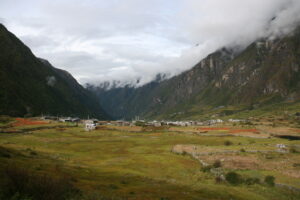
What to Expect from Nepal Trekking Packages?
Trekking in Nepal is an experience that requires careful planning and preparation. Trekking packages generally include the following:
1. Guides and Porters
Hiring a local guide and porter is highly recommended. Certified guides are familiar with the terrain, culture, and safety protocols, ensuring a smooth trekking experience. Porters assist with carrying luggage, leaving trekkers free to enjoy the journey without being burdened by heavy loads. The 2023 statistics show that Nepal employed over 26,292 licensed trekking guides, contributing to both local employment and tourism management.
2. Permits and Accommodation
Most treks require permits, including the TIMS (Trekkers’ Information Management System) and national park or conservation area permits, depending on the route. Accommodations are typically in tea houses or lodges, which provide basic but comfortable facilities along the trekking trails. Meals, usually including Dal Bhat (lentil soup with rice), are provided, giving trekkers a taste of local Nepali cuisine.
3. Customizable Packages
Trekking packages can be tailored to suit various needs, from family-friendly hikes to high-altitude expeditions. Many travel companies, like Kalpa Holidays, offer flexible itineraries and packages that can be customized based on time, budget, and fitness level.
Beyond Trekking: Other Nepal Holiday Packages
Nepal is not just a trekking destination. Its vast array of experiences, ranging from adventure to relaxation, ensures that travelers of all types can find something suited to their interests.
1. Wildlife Safaris and Eco-Tourism
The lowland jungles of Nepal, particularly in Chitwan National Park and Bardia National Park, offer thrilling wildlife safaris. Visitors can embark on jeep safaris or canoe rides to spot endangered species such as the one-horned rhinoceros, Bengal tigers, and gharial crocodiles. Nepal’s commitment to conservation has made these parks globally recognized for their eco-tourism efforts, with over 300,875 visitors to national parks and wildlife reserves in 2023.
2. Cultural and Religious Tours
For those interested in Nepal’s spiritual and cultural heritage, there are numerous cultural tours available. The Kathmandu Valley is home to 7 UNESCO World Heritage sites, including Pashupatinath Temple, Swayambhunath (Monkey Temple), Boudhanath Stupa, and Durbar Square. Pilgrimage tours to Lumbini, the birthplace of Buddha, are also popular, especially for religious tourists from countries such as India and Sri Lanka. In 2023, Lumbini saw over 85,232 visitors from third countries.
3. Adventure Sports
Nepal is an adventurer’s paradise, offering a range of activities beyond trekking. White-water rafting in rivers like the Trishuli and Seti, paragliding in Pokhara, bungee jumping in Bhote Koshi, and mountain biking in the Annapurna region are just a few of the thrilling activities available.
4. Luxury and Honeymoon Packages
For those seeking a more relaxed experience, Nepal offers luxury and honeymoon packages that combine adventure with comfort. Luxury lodges in places like Nagarkot, Pokhara, and Dhulikhel provide stunning mountain views, while spa resorts offer relaxation and rejuvenation.
Best Time to Visit Nepal for Trekking
The best time to visit Nepal largely depends on the activities you plan to pursue. For trekking, the autumn (September to November) and spring (March to May) seasons are ideal, offering stable weather, clear skies, and breathtaking mountain views.
- Autumn (September to November): This is the peak trekking season. The weather is dry, and the skies are generally clear, offering the best mountain views. This season also coincides with major Nepali festivals such as Dashain and Tihar, giving trekkers a glimpse into local culture.
- Spring (March to May): The second peak season for trekking, spring offers blooming rhododendron forests and warmer temperatures. It’s an excellent time to explore regions like the Annapurna and Langtang valleys.
- Winter (December to February): While winter trekking is possible, especially in lower-altitude areas, conditions can be harsh at higher altitudes. Snowfall in regions like Everest and Annapurna makes some passes difficult to traverse.
- Monsoon (June to August): The monsoon season brings heavy rainfall, particularly in lower regions. However, treks in the rain-shadow areas like Mustang and Dolpo are ideal during this time.
Responsible and Sustainable Trekking in Nepal
With the rise in tourism comes the need for responsible and sustainable practices to preserve Nepal’s natural beauty and cultural heritage. Here are some ways to ensure you’re traveling responsibly in Nepal:
1. Leave No Trace
Adhering to the principles of “Leave No Trace” is essential. Avoid littering, minimize plastic waste, and ensure that you pack out all trash. The mountains of Nepal are pristine, and keeping them that way is vital for future generations.
2. Support Local Communities
When trekking, staying at local tea houses and employing local guides and porters can directly benefit the communities that host you. Nepal has over 5,000 licensed tourist guides, many of whom depend on trekking tourism for their livelihood.
3. Respect Local Customs
Nepal is home to a rich array of cultures, traditions, and religions. Be mindful of local customs, especially when visiting religious sites or staying in remote villages. Always ask for permission before taking photographs of people or religious ceremonies.
Conclusion
Nepal offers a unique mix of adventure, culture, and natural beauty that few destinations can rival. Whether you’re trekking to Everest Base Camp, exploring the temples of Kathmandu, or enjoying a wildlife safari in Chitwan, Nepal has something for everyone. The country’s commitment to sustainable tourism ensures that travelers can experience its wonders while also contributing to its preservation.
With a variety of holiday and trekking packages available, now is the perfect time to explore Nepal. Whether you’re a seasoned adventurer or a first-time visitor, Kalpa Holidays offers personalized itineraries to make your Nepal journey unforgettable.
For more details on trekking and holiday packages, visit Kalpa Holidays.


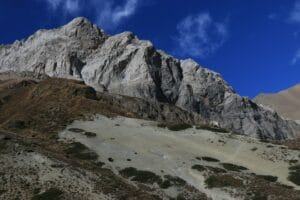
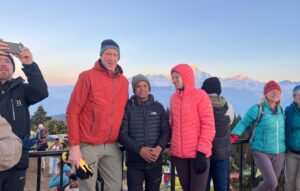
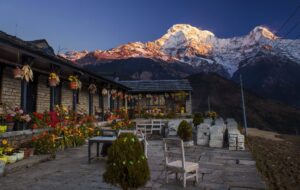
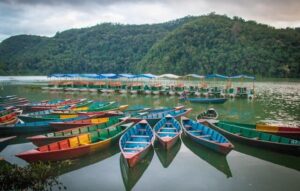

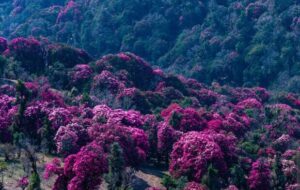
0 Comments